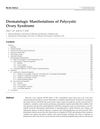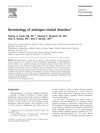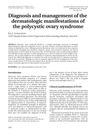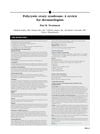Highlights
April 2016
in “
JAMA Dermatology
”
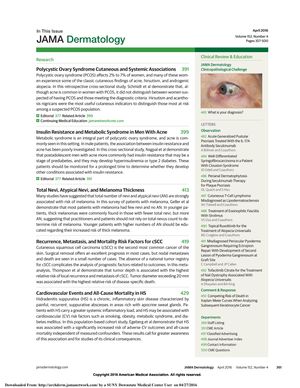
TLDR Acne is not a key diagnostic feature for PCOS, postadolescent men with acne may have insulin resistance, melanoma patients often have few moles, tumor size in CSCC indicates higher risk of serious outcomes, and hidradenitis suppurativa is linked to higher risk of heart problems and death.
In the April 2016 issue of JAMA Dermatology, several studies were highlighted. Schmidt et al conducted a retrospective cross-sectional study and found that while acne is common in women with polycystic ovary syndrome (PCOS), it is not a distinguishing feature for diagnosis; instead, hirsutism and acanthosis nigricans were more useful indicators. Nagpal et al's cross-sectional study revealed that postadolescent men with acne are more likely to have insulin resistance, which could be a precursor to prediabetes and type 2 diabetes, suggesting the need for long-term monitoring. Geller et al's survey indicated that most melanoma patients had few nevi and no atypical nevi (AN), with younger patients having thick melanomas associated with fewer total nevi but more AN, challenging the reliance on total nevus count for melanoma risk assessment. Thompson et al's meta-analysis showed that tumor depth and diameter exceeding 20 mm are significant risk factors for local recurrence, metastasis, and disease-specific death in cutaneous squamous cell carcinoma (CSCC). Lastly, Egeberg et al's population-based cohort study found that hidradenitis suppurativa (HS) is associated with an increased risk of cardiovascular events and all-cause mortality, independent of confounders.
